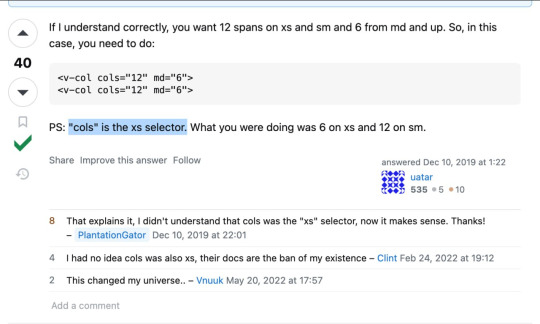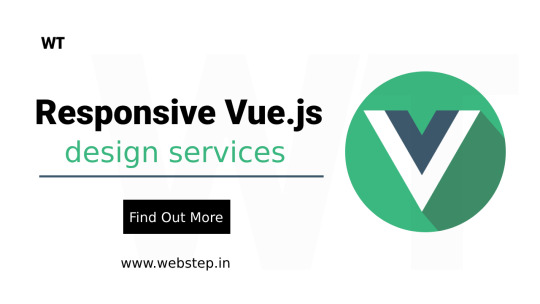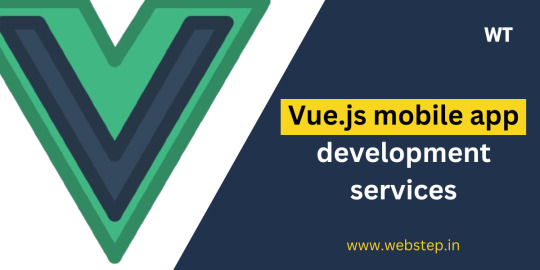#vuetify
Explore tagged Tumblr posts
Text
How to Hire Vue Js Developers? A Detailed Guide in 2025
In 2025, building modern, fast, and scalable web applications requires top-tier talent. One framework leading the charge is Vue.js, loved by developers for its flexibility, lightweight nature, and ease of integration. But finding the right Vue.js talent is not always easy.
So, how do you hire VueJS developers who can truly bring your ideas to life?
This guide is here to help. Whether you’re a startup building an MVP or a growing enterprise aiming to upgrade your UI/UX, we’ll walk you through the step-by-step process of hiring the perfect Vue.js developer in today’s competitive market.
Why Choose Vue.js in 2025?
Vue.js remains one of the most in-demand JavaScript frameworks in 2025. Here’s why businesses are betting on it:
Fast Performance: Vue apps load quickly and perform smoothly.
Two-Way Data Binding: Makes real-time updates and user interaction seamless.
Component-Based Architecture: Promotes modular, reusable code.
Easy Integration: Great for both new projects and legacy systems.
Large Developer Community: You’re never short of tools, plugins, or support.
Because of these benefits, many companies are choosing to hire VueJS developers as part of their tech upgrade strategy.

Step-by-Step Guide: How to Hire VueJS Developers
1. Identify Your Project Needs
Before diving into the hiring process, ask yourself:
Do I need a front-end Vue.js expert or a full-stack developer?
Is this a one-time project or long-term maintenance?
Do I prefer a freelancer, full-time hire, or agency?
The clearer you are with your requirements, the better you’ll attract the right candidates.
2. Decide Where to Look
There are three popular routes to find and hire VueJS developers:
Freelance Platforms (Upwork, Toptal, Freelancer): Ideal for short-term projects or prototypes.
Job Portals (Indeed, LinkedIn, AngelList): Great for hiring full-time Vue developers.
Development Agencies: Best for businesses that want project managers, designers, QA, and developers bundled together.
If you’re a non-technical founder, going through an agency can often save time and headaches.
3. Key Skills to Look for in a Vue.js Developer
Vue.js developers should have:
Strong command of JavaScript (ES6+)
Experience with Vue.js 2 and/or Vue 3
Knowledge of Vuex, Vue Router, Composition API
Understanding of RESTful APIs
Familiarity with Git, Webpack, and modern build tools
Bonus if they know Tailwind CSS, Vuetify, or TypeScript, which are increasingly used in Vue.js projects in 2025.
4. Evaluate Soft Skills and Communication
While coding is critical, soft skills make or break collaboration. Look for:
Clear communication
Accountability
Problem-solving mindset
Ability to work with remote teams
Soft skills ensure your project stays on track, especially if you’re working across time zones.
5. Conduct Technical Interviews or Test Tasks
To make sure you’re hiring the right Vue.js developer, give them a small coding task or a technical interview. Focus on:
Problem-solving ability
Code readability
Component architecture
State management (Vuex or Pinia)
Tools like HackerRank or a live coding session on Zoom can help validate their expertise.
Freelance, In-House, or Agency: What’s Best?

Mistakes to Avoid When You Hire VueJS Developers
Focusing only on price: Low-cost developers may result in low-quality code.
Skipping technical evaluation: Always test skills with real scenarios.
Unclear expectations: Define roles, deadlines, and deliverables upfront.
No contract or NDA: Always protect your business with legal agreements.
FAQs
1. What is the average experience needed to hire VueJS developers for complex apps?
Answer: For complex applications, look for Vue.js developers with at least 3–5 years of experience and a strong portfolio of previous projects, preferably using Vue 3, Vuex, and modern front-end architectures.
2. Is it better to hire a dedicated Vue.js developer or go through an agency?
Answer: If you have technical expertise and want more control, hiring directly may work. However, for non-technical founders or companies needing end-to-end support, an agency offering Vue.js services may be a safer and faster route.
3. Can Vue.js be integrated into an existing project?
Answer: Yes! Vue.js is flexible and can be added incrementally. It’s commonly used to enhance parts of existing websites or applications without rebuilding everything from scratch.
4. How long does it take to onboard a VueJS developer?
Answer: Onboarding can take 3–10 days, depending on your project complexity. Make sure you have documentation, access permissions, and clear communication channels ready.
Final Thoughts
Hiring the right Vue.js developer in 2025 is about more than just checking off technical skills. It’s about finding someone who understands your vision, communicates well, and can build scalable, high-performance apps that your users will love.
As Vue.js continues to evolve, having skilled developers on your team is a major advantage. So take your time, screen thoroughly, and choose wisely when you hire VueJS developers.
Whether you hire a freelancer, in-house expert, or a full-fledged agency make sure they’re passionate about delivering quality, because that passion will reflect in the final product.
0 notes
Text

The journey to mastering full-stack development often begins with choosing the right combination of technologies. For many developers, Python, Vue.js, and PostgreSQL form a powerful and versatile stack. This trio provides a robust backend, a dynamic front end, and a reliable database. Whether you’re a budding developer enrolled in an FSD Python course or a seasoned programmer exploring new frameworks, this guide will provide the foundational steps to set up a full-stack project.
Why Choose Python, Vue.js, and PostgreSQL?
Python: Known for its simplicity and versatility, Python is a favorite for backend development. Frameworks like Flask and Django make it easy to build scalable APIs and web applications.
Vue.js: Vue.js is a progressive JavaScript framework for building user interfaces. Its simplicity, flexibility, and reactive components make it ideal for crafting modern, dynamic frontends.
PostgreSQL: As one of the most advanced open-source relational database systems, PostgreSQL is renowned for its scalability, reliability, and extensive feature set.
Step 1: Plan Your Project Structure
In a standard full-stack project using Python, Vue.js, and PostgreSQL, the project structure is typically organized into several main directories. The backend directory contains the Python-based backend code, which could use frameworks like Django or Flask. The frontend directory holds the Vue.js frontend code and is responsible for the user interface. The database directory includes scripts and configuration files for setting up and managing the PostgreSQL database. The environment directory stores configuration files, such as environment variables and deployment settings. Finally, the docs directory is dedicated to documentation and notes related to the project. This structure ensures clarity and separation of concerns, making the project easier to manage and scale.
Step 2: Set Up the Backend with Python
Choose a Python Framework:
Flask: Lightweight and flexible for simple APIs.
Django: A full-fledged web framework with built-in features for authentication, ORM, and more.
Create the Virtual Environment:
Using virtual environments ensures project dependencies remain isolated, a key concept covered in any Python FSD curriculum.
Install Necessary Packages:
For Flask: Flask, Flask-Cors, and SQLAlchemy.
For Django, use core Django packages and DRF (Django Rest Framework) for API handling.
API Design:
Develop RESTful endpoints to handle CRUD operations.
Implement authentication mechanisms like JWT for user management.
Step 3: Develop the Frontend with Vue.js
Set Up the Vue.js Environment:
Use Vue CLI to scaffold your application. This creates a starter project with essential configurations.
Design Components:
Break down your application into modular components (e.g., header, footer, forms).
Use Vue’s data-binding and state management to handle user interactions.
API Integration:
Axios or Fetch can be used to connect the Vue.js frontend with your Python backend.
Styling:
Choose between frameworks like Vuetify, Tailwind CSS, or Bootstrap to style your application.
Step 4: Configure the PostgreSQL Database
Install PostgreSQL:
Ensure PostgreSQL is installed and running on your system. Tools like pgAdmin simplify database management.
Set Up the Database:
Define your schema and relationships. Django’s ORM or Flask’s SQLAlchemy can streamline this process.
Database Connection:
Configure your backend to connect to PostgreSQL using libraries like psycopg2.
Migrations:
Use migration tools provided by your framework (e.g., Django’s migrate command) to keep your database schema synchronized.
Step 5: Link the Frontend and Backend
Cross-Origin Resource Sharing (CORS):
Enable CORS in your backend to allow API requests from your frontend.
Environment Variables:
Use .env files to securely manage API keys, database credentials, and other sensitive information.
Serve the Frontend:
Deploy your Vue.js application and configure the backend to serve the frontend (or use a separate web server).
Step 6: Deployment
Containerization:
Use Docker to containerize your application for consistent deployment across environments.
Hosting Platforms:
For the backend, consider platforms like Heroku, AWS, or Azure.
For the front end, platforms like Vercel or Netlify are excellent choices.
Database Hosting:
Host PostgreSQL on cloud platforms like AWS RDS or DigitalOcean for better scalability.
Conclusion
Setting up a full-stack project with Python, Vue.js, and PostgreSQL may seem complex initially, but with proper guidance and practice, it becomes a manageable and rewarding process. Whether you’re enrolled in a Python Full Stack Development Course or self-learning, this stack equips you with the tools to build modern, scalable web applications.
Each step in this guide provides a foundation for exploring and implementing advanced features like authentication, real-time updates, or cloud deployment. With persistence and curiosity, you’ll be well on your way to mastering full-stack development.
Contact Us:
Phone
+917338811773
+918925903732
Email: [email protected]
0 notes
Text
Frontend Development Using Vue.js

Vue.js is one of the most popular JavaScript frameworks for building interactive user interfaces and single-page applications. It’s lightweight, flexible, and beginner-friendly — making it an excellent choice for frontend developers of all skill levels.
What is Vue.js?
Vue.js is an open-source JavaScript framework for building UIs. It was created by Evan You and is designed to be incrementally adoptable. That means you can use it to enhance parts of your webpage or build full-featured SPAs (Single Page Applications).
Why Choose Vue.js?
Easy to Learn: Simple syntax and comprehensive documentation.
Component-Based: Encourages reusable and maintainable code.
Lightweight: Fast to load and quick to execute.
Reactive Data Binding: Automatically updates the DOM when data changes.
Great Tooling: Vue CLI, Devtools, and a strong ecosystem.
Getting Started with Vue.js
You can include Vue.js via CDN or use Vue CLI for a full project setup.
Using CDN (Quick Start)
<script src="https://cdn.jsdelivr.net/npm/vue@2/dist/vue.js"></script> <div id="app"> <p>{{ message }}</p> </div> <script> var app = new Vue({ el: '#app', data: { message: 'Hello Vue!' } }); </script>
Using Vue CLI (Recommended for Projects)
npm install -g @vue/cli vue create my-vue-app cd my-vue-app npm run serve
Key Vue.js Concepts
Templates: HTML-like syntax with embedded expressions.
Directives: Special attributes like v-if, v-for, v-model.
Components: Reusable, encapsulated UI blocks.
Props & Events: Communication between parent and child components.
Reactivity System: Automatically updates DOM when data changes.
Vue Router: For building SPAs with routing.
Vuex: State management for complex applications.
Example: Creating a Component
Vue.component('todo-item', { props: ['item'], template: '<li>{{ item.text }}</li>' });
Popular Vue.js Libraries & Tools
Vue Router: Adds navigation and routing features.
Vuex: Centralized state management.
Vuetify / BootstrapVue: UI frameworks for Vue.js.
Vite: Lightning-fast development server and build tool for Vue 3.
Best Practices
Break your UI into small, reusable components.
Use Vue CLI or Vite for project scaffolding.
Keep components clean and focused.
Use Vue DevTools for debugging.
Organize files using standard folder structures (components, views, assets, store).
Conclusion
Vue.js is a powerful and approachable framework for frontend development. Whether you're enhancing a small section of your site or building a full-scale web app, Vue offers the tools and flexibility you need. Dive into Vue and take your frontend skills to the next level!
0 notes
Text
I've been using vuetify for almost 5 months, and I've JUST learned today that what they write in their docs about grid is bullshit. there is no xs prop. the cols prop works as xs prop.


1 note
·
View note
Text
Mastering Real-time Data Visualization with Vue.js and Vuetify: A Practical Guide
Introduction In today’s data-driven world, real-time data visualization is crucial for businesses, organizations, and individuals to gain insights and make informed decisions. Vue.js and Vuetify are popular choices for building web applications, especially those that require real-time data visualization. This comprehensive guide will help you master real-time data visualization with Vue.js and…
0 notes
Text
Vue CRM Mastery: From Setup to Advanced Features

Embark on a comprehensive journey to build a robust CRM system using Vue.js! This 10-part tutorial series covers everything you need to know, including:
Project setup and structure
Implementing Vuetify for sleek UI
Firebase integration for authentication and data management
Creating dynamic layouts and secure navigation
Mastering data visualization with Vuetify tables
Enhancing user engagement with modals and alerts
Implementing CRUD operations
Perfect for developers looking to level up their Vue.js skills and add an impressive project to their portfolio. Follow along to create a fully-functional CRM from scratch!
Read the full tutorial series: https://webcraft-notes.com/blog/vue-crm-mastery-a-comprehensive-guide-to
0 notes
Link
In this tutorial, we are going to learn how to build a customizable and pageable data table in Vue application using the Vuetify plugin.
0 notes
Text
Responsive Vue.js design services

In the contemporary digital landscape, where user experience is paramount, Vue.js emerges as a formidable tool for crafting responsive design services that redefine user interactions. Renowned for its simplicity, flexibility, and performance, Vue.js has gained significant traction among developers worldwide. Its reactive components and robust ecosystem enable the seamless adaptation of digital platforms to diverse devices and screen sizes, ensuring a consistent and engaging user experience across all interfaces. Responsive Vue.js design services not only meet the demands of today's multi-device landscape but also elevate websites to new heights of accessibility and usability. Through fluid layouts, CSS media queries, and modular component composition, developers can leverage Vue.js to create dynamic interfaces that dynamically adjust and optimize content presentation based on the user's device, screen size, and orientation. In essence, responsive Vue.js design services serve as the cornerstone for businesses looking to establish a strong online presence and foster lasting connections with their audiences.
Understanding Responsive Design
Responsive design is not merely a trend but a necessity in today's multi-device landscape. It entails creating web interfaces that dynamically adjust and optimize content presentation based on the user's device, screen size, and orientation. Whether accessed via desktops, tablets, or smartphones, responsive websites ensure accessibility and usability, thereby enhancing user satisfaction and retention.
The Vue.js Advantage
Vue.js empowers developers to implement responsive design principles with ease and efficiency. Its reactive data-binding mechanism facilitates real-time updates and seamless synchronization between data and the user interface. This inherent reactivity enables developers to build fluid layouts and adaptive components that adapt dynamically to varying viewport sizes.
Moreover, Vue.js offers a plethora of responsive design libraries and plugins that streamline the development process. Frameworks like Vuetify, BootstrapVue, and Quasar provide pre-built components and utilities optimized for responsive web design. These libraries enable developers to rapidly prototype and deploy responsive interfaces while maintaining code consistency and scalability.
Key Strategies for Responsive Vue.js Design Services
Fluid Layouts: Embrace fluid grid systems and flexible layouts that adapt gracefully to different screen resolutions and aspect ratios. Utilize Vue.js directives such as v-bind and v-if to conditionally render components and adjust styles based on viewport dimensions.
Media Queries: Leverage CSS media queries in conjunction with Vue.js to apply responsive styles based on device characteristics. Define breakpoints and adjust typography, spacing, and layout properties to ensure optimal readability and visual hierarchy across devices.

Component Composition: Decompose complex UI elements into reusable components that encapsulate behavior and styling logic. Adopt a modular approach to development, where each component focuses on a specific functionality or feature. This modular architecture enhances code maintainability and facilitates responsive design iteration.
Viewport Meta Tag: Set the viewport meta tag appropriately to ensure proper scaling and layout on mobile devices. Configure the viewport width and initial-scale parameters to establish a responsive viewport that adapts to the device's screen size and pixel density.
Progressive Enhancement: Embrace progressive enhancement principles to prioritize core content and functionality across devices. Start with a solid foundation of accessible HTML markup and enhance the user experience progressively using Vue.js for interactivity and dynamism.
Conclusion
In conclusion, Vue.js offers a robust framework for developing responsive design services that prioritize user experience and accessibility. By embracing responsive design principles and leveraging Vue.js' reactivity and flexibility, businesses can create compelling web experiences that resonate with audiences across devices.
In the ever-evolving digital landscape, responsiveness is not an option but a prerequisite for success. By investing in responsive Vue.js design services, businesses can stay ahead of the curve and deliver seamless, engaging experiences that drive user engagement and satisfaction. Find out more: https://www.webstep.in/hire-vue-js-developers
1 note
·
View note
Text
0 notes
Text
0 notes
Text
Hire VueJS Developers in 2025: Best Practices & Expert Tips for Success
In today’s fast-moving digital world, speed, performance, and user experience are everything. If you’re planning to build a modern web app in 2025, Vue.js is likely at the top of your tech stack. But great technology needs skilled people and that’s where hiring the right Vue.js developers becomes critical.
In this blog, we’ll guide you through the best practices to hire VueJS developers, what to look for, and how to ensure your web project is a success. Whether you’re a startup, agency, or enterprise, this guide will help you make a smart and future-ready hiring decision.

Why Choose Vue.js in 2025?
Vue.js continues to be one of the most popular JavaScript frameworks due to its flexibility, speed, and ease of integration. It’s ideal for building lightweight, high-performing apps from single-page applications (SPAs) to complex enterprise dashboards.
Some reasons why Vue.js is dominating 2025:
Lightweight and fast
Easy to learn, quick to develop
Backed by a growing community and ecosystem
Great for both startups and enterprise applications
When Should You Hire VueJS Developers?
If you're planning to:
Build a new app with a rich front-end experience
Upgrade from jQuery or AngularJS
Migrate to a more flexible and scalable framework
Develop a progressive web app (PWA)
Create a modular and reusable component-based UI
Then it’s the right time to hire VueJS developers.
Best Practices to Hire VueJS Developers in 2025
Here’s how to hire smart and avoid costly mistakes:
1. Define Your Project Scope Clearly
Before you start hiring, know what you’re building. Is it a dashboard? A full-scale SaaS? A mobile-friendly app using Vue with NativeScript? Clear documentation helps developers give better estimates and deliver on time.
2. Look Beyond Just Coding Skills
A great Vue.js developer is not just a coder; they should understand design patterns, component architecture, state management (Vuex or Pinia), routing (Vue Router), and performance optimization.
3. Test with a Small Task First
Start with a trial project or a small module to evaluate their coding style, communication, and how well they follow deadlines.
4. Prioritize Communication & Collaboration
Especially for remote hires, strong communication skills are as important as technical ones. Ensure the developer is comfortable with tools like Slack, Jira, Git, and Zoom.
5. Ask About Past Vue Projects
When you hire VueJS developers, ask to see previous work. It gives you insight into their real-world experience with the framework.
What to Look for in a VueJS Developer
Here's a checklist to help you identify top Vue talent:
Strong knowledge of Vue 3 and Composition API
Experience with Vuex, Pinia, Vue Router
Familiarity with REST APIs and GraphQL
Understanding of HTML, CSS, SCSS, and Tailwind
Knowledge of testing frameworks like Jest or Cypress
Familiar with Git, Agile, and DevOps practices
Bonus: Experience with Nuxt.js for SSR (Server-Side Rendering) or Vite for blazing-fast development environments.
Expert Tips for Success
Build a clean onboarding process – Give your new hires a good start with proper documentation and setup.
Use component libraries wisely – Tools like Vuetify, Quasar, or Element Plus can speed up UI development.
Focus on scalability – Ask developers how they plan to keep code modular and clean for long-term growth.
Set regular check-ins – Weekly demos and reviews help catch issues early and keep everyone aligned.
Trending Use Cases for Vue.js in 2025
Vue.js isn’t just for web apps anymore. Today’s Vue developers are working on:
Progressive Web Apps (PWAs)
Real-time dashboards
Admin panels for SaaS
Cross-platform mobile apps
JAMstack sites with headless CMSs like Strapi
So if you're scaling in any of these areas, it's a smart time to hire VueJS developers to future-proof your project.
Frequently Asked Questions (FAQs)
Q1: Should I hire freelance Vue developers or a full-time in-house team?
A: It depends on your project scope and budget. Freelancers are ideal for short-term or one-time projects. In-house or dedicated remote teams are better for long-term development, ongoing updates, or projects requiring tight collaboration.
Q2: What questions should I ask during the interview?
Ask questions like:
Can you explain the Composition API vs. Options API?
How do you manage state in a large Vue app?
How do you handle code splitting and lazy loading?
Have you worked with Nuxt.js or SSR apps?
These will help you gauge depth of knowledge and practical experience.
Q3: Where can I find skilled Vue.js developers?
You can hire VueJS developers through:
Freelance platforms (Upwork, Toptal)
Dedicated outsourcing companies
Developer communities (GitHub, VueLand Discord)
LinkedIn and remote job boards
A VueJS-focused development agency can also provide pre-vetted professionals if you're in a rush.
Final Thoughts: Build Smarter with the Right VueJS Developers
Hiring the right developer is the key to any successful tech project. In 2025, Vue.js continues to rise in popularity because it’s lightweight, fast, and scalable making it perfect for modern web development.
When you hire VueJS developers, focus on real-world skills, communication, and long-term collaboration. Whether you’re building a simple landing page or a full enterprise dashboard, the right Vue developer will help bring your ideas to life with clean code and efficient delivery.
Need help finding the right team? Consider working with a Vue.js development agency that can match you with vetted experts and guide your project from concept to launch.
Would you like this blog delivered as a downloadable Word document or HTML version?
0 notes
Text
How to Set Up a Full Stack Project with Python, Vue.js, and PostgreSQL

The journey to mastering full-stack development often begins with choosing the right combination of technologies. For many developers, Python, Vue.js, and PostgreSQL form a powerful and versatile stack. This trio provides a robust backend, a dynamic front end, and a reliable database. Whether you’re a budding developer enrolled in an FSD Python course or a seasoned programmer exploring new frameworks, this guide will provide the foundational steps to set up a full-stack project.
Why Choose Python, Vue.js, and PostgreSQL?
Python: Known for its simplicity and versatility, Python is a favorite for backend development. Frameworks like Flask and Django make it easy to build scalable APIs and web applications.
Vue.js: Vue.js is a progressive JavaScript framework for building user interfaces. Its simplicity, flexibility, and reactive components make it ideal for crafting modern, dynamic frontends.
PostgreSQL: As one of the most advanced open-source relational database systems, PostgreSQL is renowned for its scalability, reliability, and extensive feature set.
Step 1: Plan Your Project Structure
In a standard full-stack project using Python, Vue.js, and PostgreSQL, the project structure is typically organized into several main directories. The backend directory contains the Python-based backend code, which could use frameworks like Django or Flask. The frontend directory holds the Vue.js frontend code and is responsible for the user interface. The database directory includes scripts and configuration files for setting up and managing the PostgreSQL database. The environment directory stores configuration files, such as environment variables and deployment settings. Finally, the docs directory is dedicated to documentation and notes related to the project. This structure ensures clarity and separation of concerns, making the project easier to manage and scale.
Step 2: Set Up the Backend with Python
Choose a Python Framework:
Flask: Lightweight and flexible for simple APIs.
Django: A full-fledged web framework with built-in features for authentication, ORM, and more.
Create the Virtual Environment:
Using virtual environments ensures project dependencies remain isolated, a key concept covered in any Python FSD curriculum.
Install Necessary Packages:
For Flask: Flask, Flask-Cors, and SQLAlchemy.
For Django, use core Django packages and DRF (Django Rest Framework) for API handling.
API Design:
Develop RESTful endpoints to handle CRUD operations.
Implement authentication mechanisms like JWT for user management.
Step 3: Develop the Frontend with Vue.js
Set Up the Vue.js Environment:
Use Vue CLI to scaffold your application. This creates a starter project with essential configurations.
Design Components:
Break down your application into modular components (e.g., header, footer, forms).
Use Vue’s data-binding and state management to handle user interactions.
API Integration:
Axios or Fetch can be used to connect the Vue.js frontend with your Python backend.
Styling:
Choose between frameworks like Vuetify, Tailwind CSS, or Bootstrap to style your application.
Step 4: Configure the PostgreSQL Database
Install PostgreSQL:
Ensure PostgreSQL is installed and running on your system. Tools like pgAdmin simplify database management.
Set Up the Database:
Define your schema and relationships. Django’s ORM or Flask’s SQLAlchemy can streamline this process.
Database Connection:
Configure your backend to connect to PostgreSQL using libraries like psycopg2.
Migrations:
Use migration tools provided by your framework (e.g., Django’s migrate command) to keep your database schema synchronized.
Step 5: Link the Frontend and Backend
Cross-Origin Resource Sharing (CORS):
Enable CORS in your backend to allow API requests from your frontend.
Environment Variables:
Use .env files to securely manage API keys, database credentials, and other sensitive information.
Serve the Frontend:
Deploy your Vue.js application and configure the backend to serve the frontend (or use a separate web server).
Step 6: Deployment
Containerization:
Use Docker to containerize your application for consistent deployment across environments.
Hosting Platforms:
For the backend, consider platforms like Heroku, AWS, or Azure.
For the front end, platforms like Vercel or Netlify are excellent choices.
Database Hosting:
Host PostgreSQL on cloud platforms like AWS RDS or DigitalOcean for better scalability.
Conclusion
Setting up a full-stack project with Python, Vue.js, and PostgreSQL may seem complex initially, but with proper guidance and practice, it becomes a manageable and rewarding process. Whether you’re enrolled in a Python Full Stack Development Course or self-learning, this stack equips you with the tools to build modern, scalable web applications.
Each step in this guide provides a foundation for exploring and implementing advanced features like authentication, real-time updates, or cloud deployment. With persistence and curiosity, you’ll be well on your way to mastering full-stack development.
Contact Us:
Phone
+917338811773
+918925903732
Email: [email protected]
0 notes
Text
0 notes
Text

Hey Vuers! Vuetify has 5 new official components including Data Table!
https://tomaszs2.medium.com/vuetify-3-4-0-with-data-table-and-4-new-components-8a9dfe85b1eb
#programming #webdev #vue #vuetify #webdesign
0 notes
Text
Creating a Vue.js Admin Dashboard with Vuetify and Vuex
Introduction Creating a Vue.js Admin Dashboard with Vuetify and Vuex is a popular choice for building robust and scalable web applications. In this tutorial, we will guide you through the process of creating a comprehensive admin dashboard using these technologies. By the end of this tutorial, you will have a fully functional admin dashboard with advanced features and a solid understanding of…
0 notes